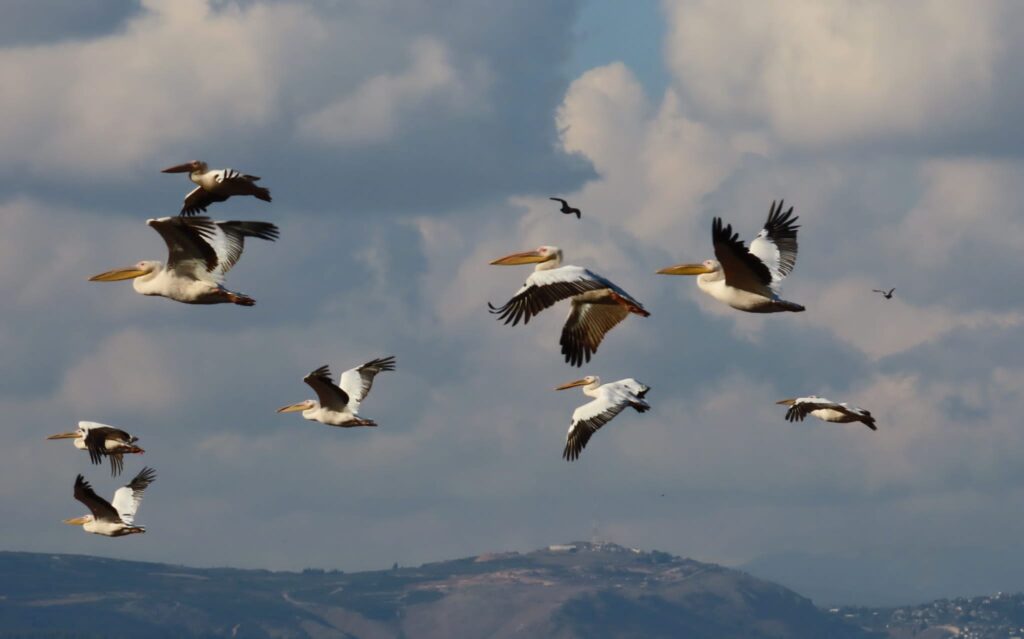Approximately 200 early migratory birds, including 5 black storks, arrived at the Agamon Hula and continued their long migration northward. Around 600,000 migratory birds fly through the Agamon Hula in spring, from Africa to their nesting areas in Europe. Typically, male birds migrate early to quickly reach the nesting site, renovate, and prepare it for the arrival of their mates.
Even 50 cranes, the largest birds that migrate in Israel (their wingspan can reach up to 3 meters!), took part in the migration. Cranes are critically endangered, and unfortunately, their numbers are decreasing each year.
The common cranes, recovering from the Avian influenza, have also started their migration training. As the weather warms up, they soar, stretch their wings, check the weather conditions and wind, and after some time in the air, return to the Agamon Hula to search for food, strengthening themselves for the long journey. One of the charming sights these days is the courtship dance of the cranes. They stay together during migration and winter and to maintain this wonderful partnership, they never stop courting and dancing.
With the arrival of spring, nature awakens to new life. The battle of the francolins takes place; the francolin is a cautious and shy bird most of the year. However, spring and hormones infuse it with courage, and during this time, you can see them fighting for nesting territories. After the battle, the victor takes a high position and declares its triumph, in front of other males and especially in front of the females, hoping that one of them will choose him and join him in the nesting.
KKL-JNF field manager at Agamon Hula, Inbar Shlomit Rubin: “Agamon Hula is a humid and crucial breeding ground for birds with national and international importance, serving as a critical stopover for millions of migratory birds. The lake is rich in water and food, allowing the migrating birds to rest and accumulate enough energy to endure the long migration journey. For some of the birds, Agamon Hula is a preferred nesting area, where they stay to raise the next generation.”
Photo credit- Inbar Shlomit Rubin, KKL-JNF


Artículos Relacionados: